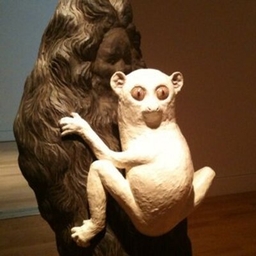
Murray Whyte
Art Critic and Columnist at The Boston Globe
Art stuff from @BostonGlobe art critic Murray Whyte. Also other stuff. x -@TorontoStar, bylines @nytimes @guardian, always 🇨🇦 Insta: @murrayscottwhyte
Articles
-
2 weeks ago |
bostonglobe.com | Murray Whyte
A dull thud, regular, muted, persistent, fills the stairwell at the MassArt Museum: Thump-thump, thump-thump. It’s strange but familiar. Then it hits you — it’s the rhythm of a beating heart, but its source is far from human. In a vast chamber at the top of the stairs, a giant cedar box drum, a ceremonial instrument for Northwest Coast Indigenous cultures, hangs from the ceiling, trussed by thick rope.
-
3 weeks ago |
bostonglobe.com | Murray Whyte
NEW HAVEN – How much is too much Turner? New England’s determined to put it to the test. The past few years have seen no less than four major showcases of the British firebrand’s catalytic oeuvre within a few hours drive of Boston; the biggest was at the Museum of Fine Arts in 2022. The latest (and current) is “J.M.W. Turner: Romance and Reality,” at the Yale Center for British Art. Its reason for being is the artist’s 250th birthday, and why not? When it comes to Turner, any old excuse will do.
-
1 month ago |
bostonglobe.com | Don Aucoin |A.Z. Madonna |Murray Whyte |Jeffrey Gantz |Jon Garelick |Maura Johnston | +1 more
Christiani Pitts (Robin) and Sam Tutty (Dougal) in rehearsal for "Two Strangers (Carry a Cake Across New York)."Nile Scott StudiosTWO STRANGERS (CARRY A CAKE ACROSS NEW YORK CITY) The two strangers in question in this musical two-hander are Dougal, a cheery Britisher in his mid-20s traveling to attend the wedding of his father — whom he has never met — and Robin, also in her 20s, a hard-bitten native New Yorker who is the sister of the young woman Dougal‘s father is about to marry.
-
1 month ago |
bostonglobe.com | Murray Whyte
The inaugural edition of the Boston Public Art Triennial, a sprawling, once-in-three-years infiltration of public spaces from Charlestown to Mattapan and many points in between, officially launches May 22. With more than 20 projects on view through the end of October, your opportunities to engage it are many, and your timeline generous. But public art aspires to much more than one-and-done viewing.
-
1 month ago |
asianamericans.einnews.com | Don Aucoin |A.Z. Madonna |Murray Whyte |Jeffrey Gantz |Jon Garelick |Maura Johnston | +1 more
Christiani Pitts (Robin) and Sam Tutty (Dougal) in rehearsal for "Two Strangers (Carry a Cake Across New York)."Nile Scott StudiosTWO STRANGERS (CARRY A CAKE ACROSS NEW YORK CITY) The two strangers in question in this musical two-hander are Dougal, a cheery Britisher in his mid-20s traveling to attend the wedding of his father — whom he has never met — and Robin, also in her 20s, a hard-bitten native New Yorker who is the sister of the young woman Dougal’s father is about to marry.
Journalists covering the same region

Roberto Scalese
Senior Editor, Digital at WBUR-FM (Boston, MA)
Roberto Scalese primarily covers news in Boston, Massachusetts, United States and surrounding areas including Framingham.

Irene Rotondo
Reporter at MassLive.com
Irene Rotondo primarily covers news in Boston, Massachusetts, United States and surrounding areas including Cambridge and Quincy.

Norman Miller
Reporter at MetroWest Daily News
Norman Miller primarily covers news in the Greater Boston area, including towns like Framingham and Waltham, Massachusetts, United States.

Christine Willmsen
Investigations Reporter and Editor at WBUR-FM (Boston, MA)
Christine Willmsen primarily covers news in Boston, Massachusetts, United States and surrounding areas including Framingham.

Lauren Young
Producer at WPRI-TV (Providence, RI)
Lauren Young primarily covers news in the Greater Boston area including Cambridge and surrounding suburbs in Massachusetts, United States.
Try JournoFinder For Free
Search and contact over 1M+ journalist profiles, browse 100M+ articles, and unlock powerful PR tools.
Start Your 7-Day Free Trial →Coverage map
X (formerly Twitter)
- Followers
- 4K
- Tweets
- 5K
- DMs Open
- No